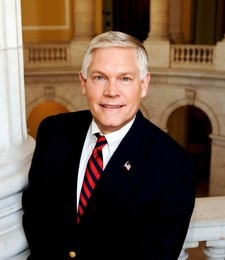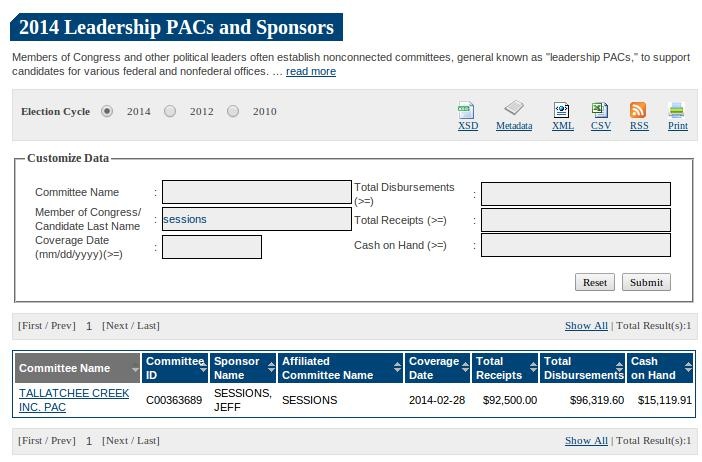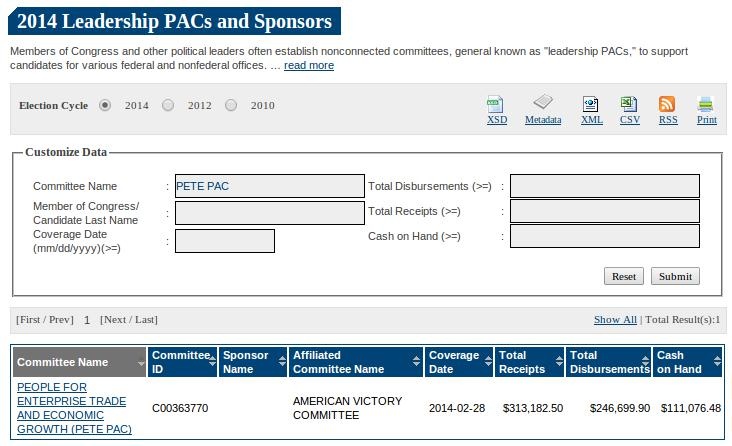How bad is disclosure at the FEC? Worse than Justice Roberts thinks
Today, given the Internet,disclosure offers much more robust protections against corruption. See Citizens United, supra, at 370–371. Reports and databases are available on the FEC’s Web site almost immediately after they are filed, supplemented by private entities such as OpenSecrets.org and FollowTheMoney.org. Because massive quantities of information can be accessed at the click of a mouse, disclosure is effective to a degree not possible at the time Buckley, or even McConnell, was decided.
Where to start?
Forget the fact that [the Senate’s paper filings](http://sunlightfoundation.com/blog/2014/03/19/disclosure-doesnt-belong-in-the-back-of-a-filing-cabinet/) aren’t exactly Internet-ready. Forget the fact that “immediately after they are filed” overlooks the fact that [many disclosures don’t have to be filed very often](http://www.fec.gov/info/report_dates_2014.shtml#frequency). Forget the fact that Roberts has already seen the Supreme Court’s optimistic predictions about transparency in the *Citizens United* opinion proven somewhat… inaccurate.

These are all relevant concerns, but let’s look specifically at his claim that the internet is enabling a level of disclosure that will rein in the influence of money in politics. Surely the web is a fantastic medium for data exchange, but, in this case, that exchange is hindered by the data’s source.
As an example of some of the basic problems plaguing campaign finance disclosure, let’s take a look at [Leadership PACs](http://www.opensecrets.org/industries/indus.php?ind=Q03). These committees are believed by many to benefit greatly from today’s ruling. They are non-authorized committees that are “directly or indirectly established, financed, maintained or controlled by a federal candidate or officeholder.”
If Roberts’ rosy view of Internet-enabled disclosure holds, the average voter might expect to be able to visit the website for the [Federal Elections Commission](http://fec.gov/) and find information about Leadership PACs. Their names, total raised and spent, and most importantly, their connection to the all-important “federal candidate or officeholder” that founded them.
That information is tougher to find than Justice Roberts thinks. It takes more than “the click of a mouse” to discover even the most basic data about some committees.
Let’s look specifically at a crucial attribute of the leadership PAC: its affiliated candidate or officeholder. That particular piece of data comes from the committees’ Statements of Organization ([FEC Form 1](http://www.fec.gov/pdf/forms/fecfrm1.pdf), for those playing along at home). According to [the instructions](http://www.fec.gov/pdf/forms/fecfrm1i.pdf), these committees “must check the leadership PAC box and identify its sponsor on line 6.” The sponsor, of course, is the federal candidate or officeholder in question.
So if we wanted to, say, make a list of all of the registered Leadership PACs and their associated sponsors, we’d first look for records that have the “leadership PAC” box checked on line 6, and then look at the sponsor’s name to know who the federal candidate or officeholder is. Sounds easy, right?
After quite a few clicks of her mouse, an experienced user might find herself at the only resource that the FEC offers for tracking leadership PACs: [a table of Form 1 filings](http://fec.gov/data/Leadership.do?format=html&election_yr=2014) where the committee has self-identified as a leadership PAC. This must be what Roberts is talking about! There’s quite a bit of information here, and lots of links to original filings. Oops, and also a disclaimer: “Because committees identify the leadership PAC sponsor in several different ways, columns in the table are included to show all of them.” Wait, huh? Isn’t the most important detail about a leadership PAC the politician or federal candidate who sponsors it? Why would such an important piece of information get reported in several different ways?
What about the voter who wants to know just about his or her representative? Surely the FEC’s website can help with that. Let’s say, for instance, that I live in Dallas and I want to know what the leadership PAC for my representative (Pete Sessions) is up to. Searching for him through this interface turns up Sen. Jeff Sessions, R-Ala., but not Pete.

Looks like Rep. Sessions either doesn’t have a leadership PAC or didn’t fill out the “sponsor” field in Form 1.
Let’s assume I know that he does have a Leadership PAC. I need to know the name of the PAC to find it. Well that shouldn’t be too hard. His name is probably in the name of the committee, right? It’s probably called “Pete Sessions’s Awesome Leadership PAC” or something, right? Nope. In fact, exactly none of the Leadership PAC names contain the names of their sponsors, because they’re not allowed to. Citing the FEC’s instructions again: “A political committee which is not an authorized committee can not include the name of any candidate in its name.” Another dead end.
Pete Sessions does, in fact, have a Leadership PAC: it’s called “People for Enterprise Trade and Economic Growth” aka “PETE PAC.” The committee’s form 1, line 6 is, in fact, filled out, but it identifies its sponsor as “American Victory Committee.”

Click your mouse a few more times, and you can find out that American Victory Committee is a joint fundraising committee that has made contributions to both PETE PAC and the New Pioneers PAC, which further mouse clickery will tell you is the Leadership PAC of Rep. Greg Walden. So now we have three PACs and a minor headache. Incidentally, I can’t link you to those other pages because there are no permalinks available on [fec.gov](http://fec.gov).
To be clear, Rep Sessions isn’t guilty of evading disclosure. PETE PAC does disclose Sessions as a sponsor in a separately filed amendment (Form 1S). That doesn’t matter, though, because data isn’t searchable or even available through this interface. I can only know that by poring over the individual PDFs of submitted filings.
Whew. The Internet sure makes transparency easy.
If the American public weren’t so lucky as to have organizations like OpenSecrets.org [poring over documents for us](http://www.opensecrets.org/pacs/lookup2.php?strID=C00363770&cycle=2014), we’d be in the dark about many of the major campaign finance actors. It is completely inappropriate that the highest court in the land base their judgment on the happenstance that such an independent, donor-funded organization exists. Justifying the decision on the basis of healthy disclosure is reckless when it is well known that the government isn’t demanding it or providing it in a useful way.

